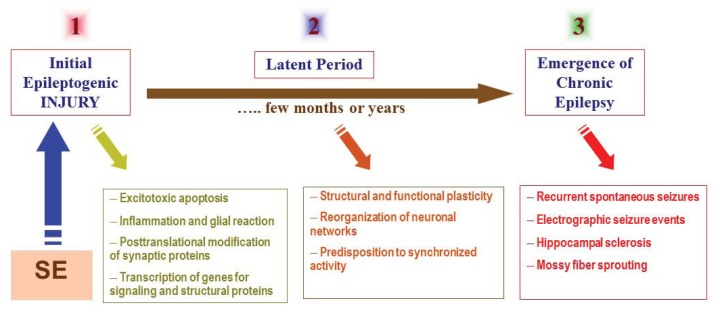Figure 1.
The pathophysiological basis of epileptogenesis following SE episode. The mechanisms involved in epileptogenesis involve an interaction of acute and delayed anatomic, molecular, and physiological events that are both complex and multifaceted. SE-induced neuronal injury activates diverse signaling events, such as inflammation, oxidation, apoptosis, neurogenesis and synaptic plasticity, which eventually leads to structural and functional changes in neurons. It is a progressive process that produces rearrangement of synaptic circuitry, neurogenesis, mossy fiber sprouting and a hyperexcitability state over weeks or months or years (latent period). These changes are eventually manifested as spontaneous recurrent seizures (epilepsy) in susceptible persons.

